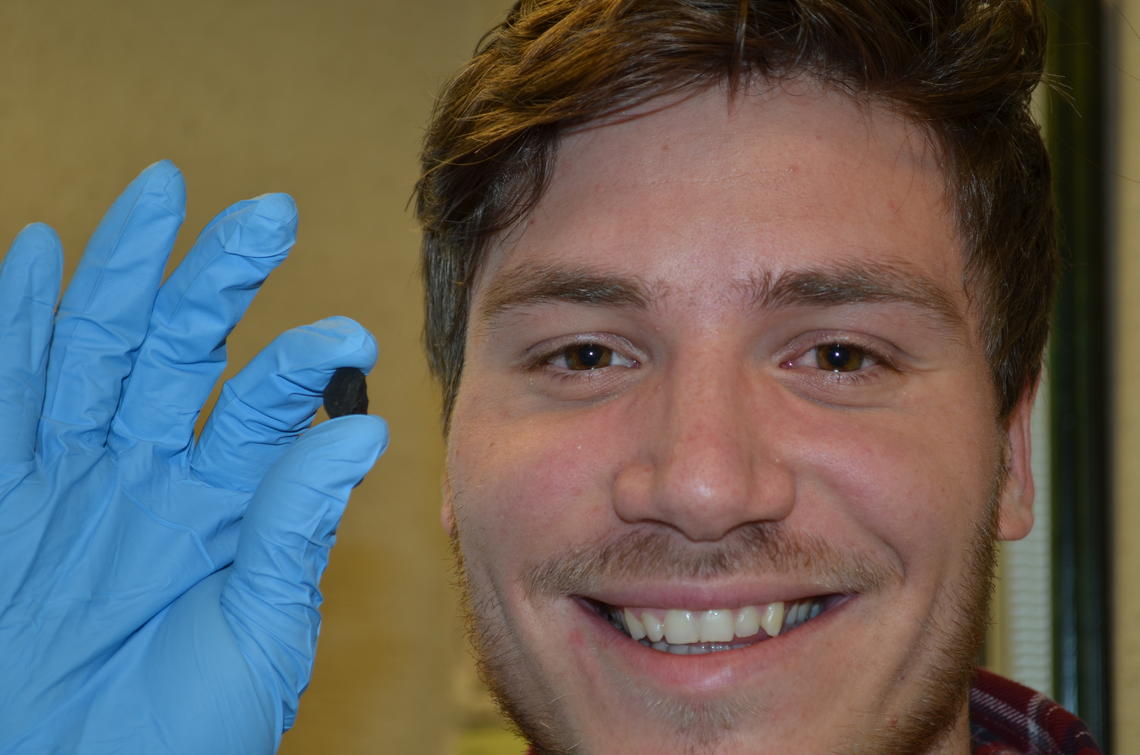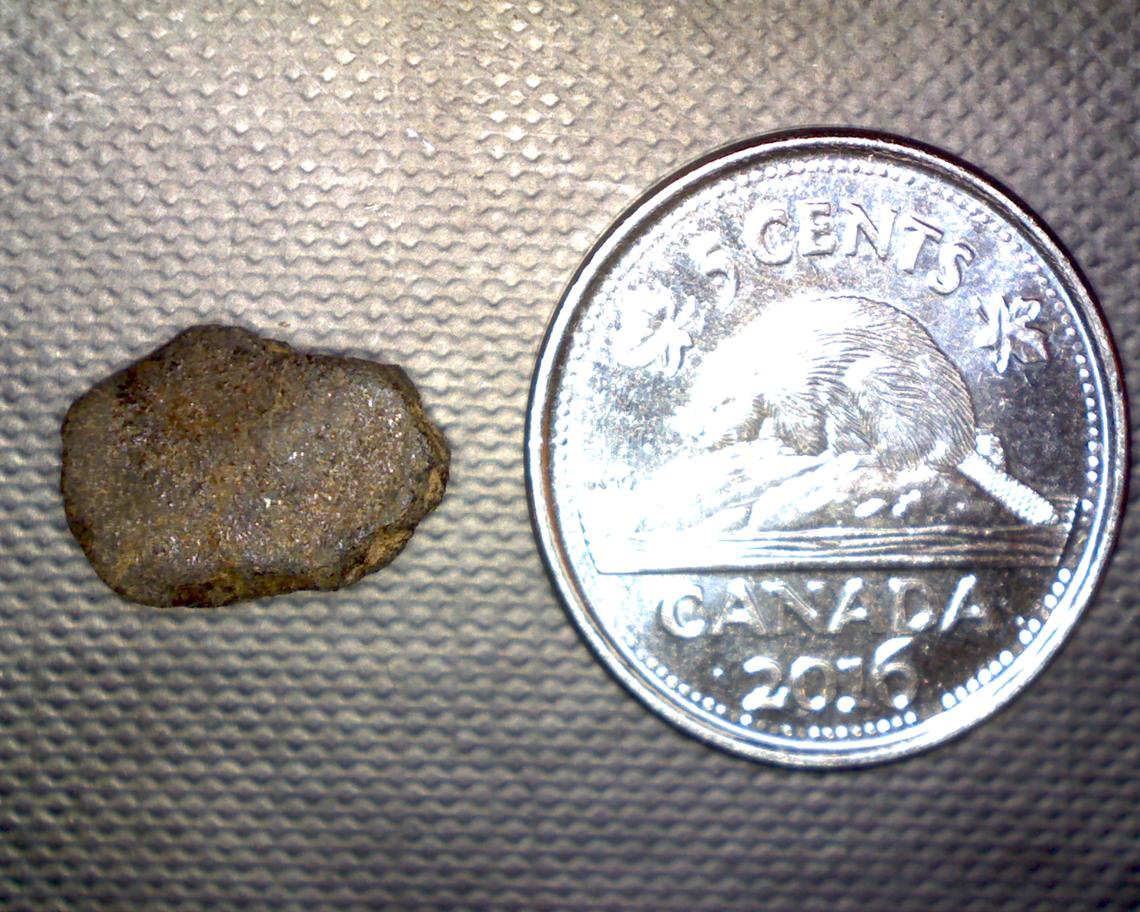Nov. 10, 2017
University of Calgary team locates Labour Day fireball fall zone

Fabio Ciceri, a visiting student from the University of Milan, made the first meteorite discovery.
Gloria Visser-Niven, University of Calgary
Researchers from the University of Calgary and international colleagues have discovered the meteorite remnants from a fireball bright enough to be seen from space, and by witnesses across Western Canada and the northwestern United States.
An asteroid fragment measuring one metre wide and weighing one to five tonnes entered Earth’s atmosphere on the evening of Sept. 4, 2017 and lit up the sky. The bright streak alarmed and confused many witnesses, sending some emergency response teams scrambling.
Alan Hildebrand, associate professor in the Department of Geoscience, led the search group out of the University of Calgary to find the remnants. “We thought that the best way to track the meteorite would be to ask members of the public to send us their videos of the fireball,” Hildebrand says. “We had a great response and co-operation from many people, who gave us access to homes and businesses.”
The team plans to continue searching, but the approaching winter has made finding meteorites more challenging. “We need to recover more and larger meteorites to learn what we can from this fall. For example, with enough pieces we can tell how big the rock was when it entered the atmosphere,” says Hildebrand. Thousands of meteorites, ranging from the size of a peppercorn up to rocks weighing five to 10 kilograms, will have fallen, but most will be in the forest that blankets the eastern shore of Kootenay Lake. Hildebrand expects that interested people will be finding meteorites in the forest across the "strewnfield" for years.

Comparison of a remnant beside a nickle.
Lincoln Hanton, Faculty of Science
Finding the first space rock
On Sept. 13, University of Calgary researchers put out a call for help from the public, asking for videos of the fireball that the team would analyze to better track and pinpoint where meteorites fell. The team used the videos to pinpoint the meteorites’ location in the predicted fall zone — what researchers call a strewnfield — a 20-kilometre stretch starting east of Crawford Bay, B.C., to the Kootenay Lake shore north of the village of Riondel.
With the prediction of where meteorites would have fallen, the UCalgary team headed into the search area and found the first meteorite on Oct. 29 on private land in northeastern Crawford Bay. Fabio Ciceri, a visiting master of science student from the University of Milan, made the first meteorite discovery. Ciceri says, “At first I couldn’t believe it — ever since I was a child I got up with my father to see the night sky, and it was like a dream to hold a space rock in my hand.”
Additional meteorites needed to help researchers learn more
The researchers also encourage anyone running security or wildlife cameras in the Riondel area to check their cameras (Sept. 4 fireball start time of ~22:11:25 PDT) to see if they captured the light and shadows cast by the fireball. This will help researchers determine the fireball’s end location so that more accurate fall locations can be predicted for the largest pieces.
